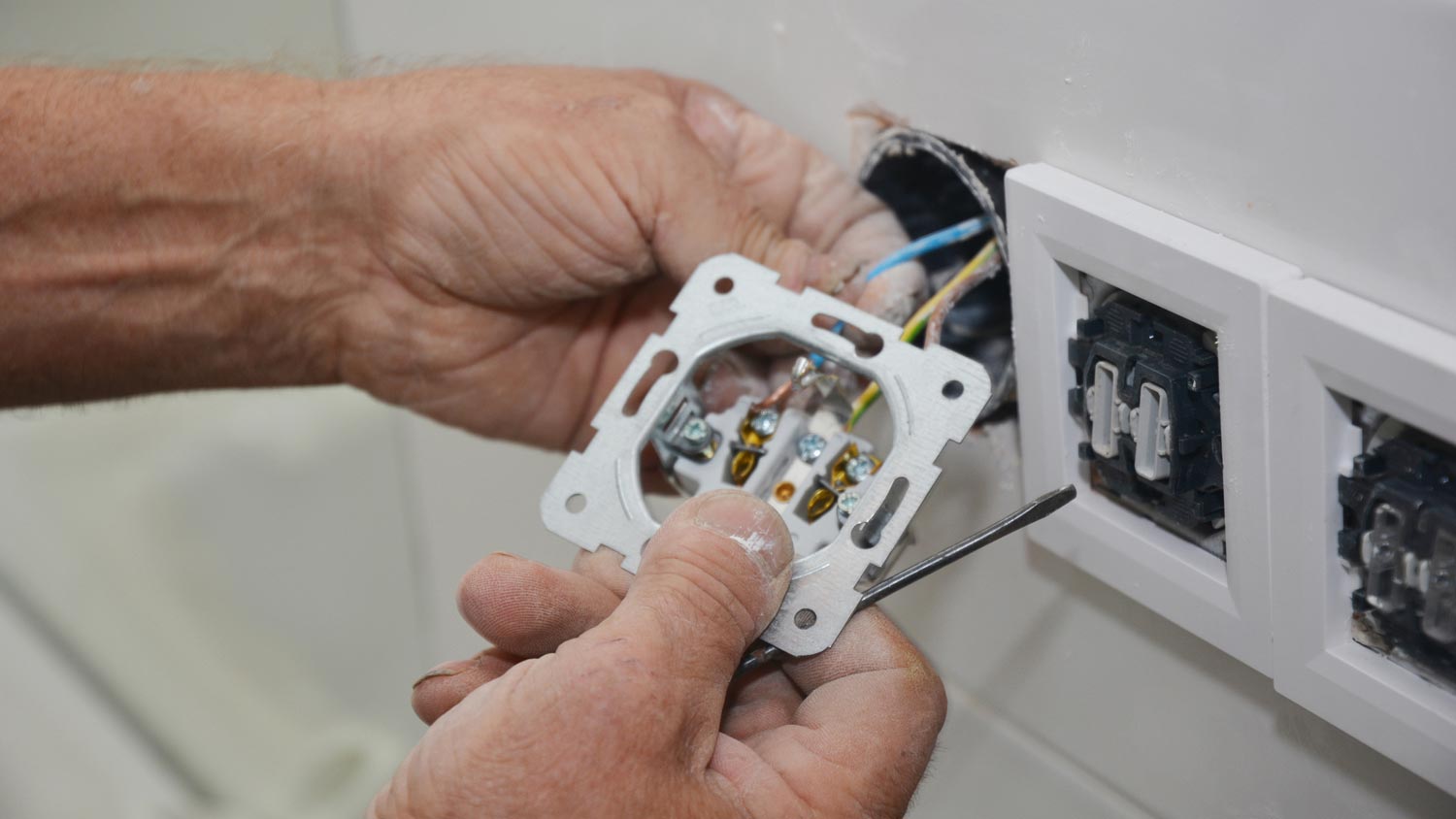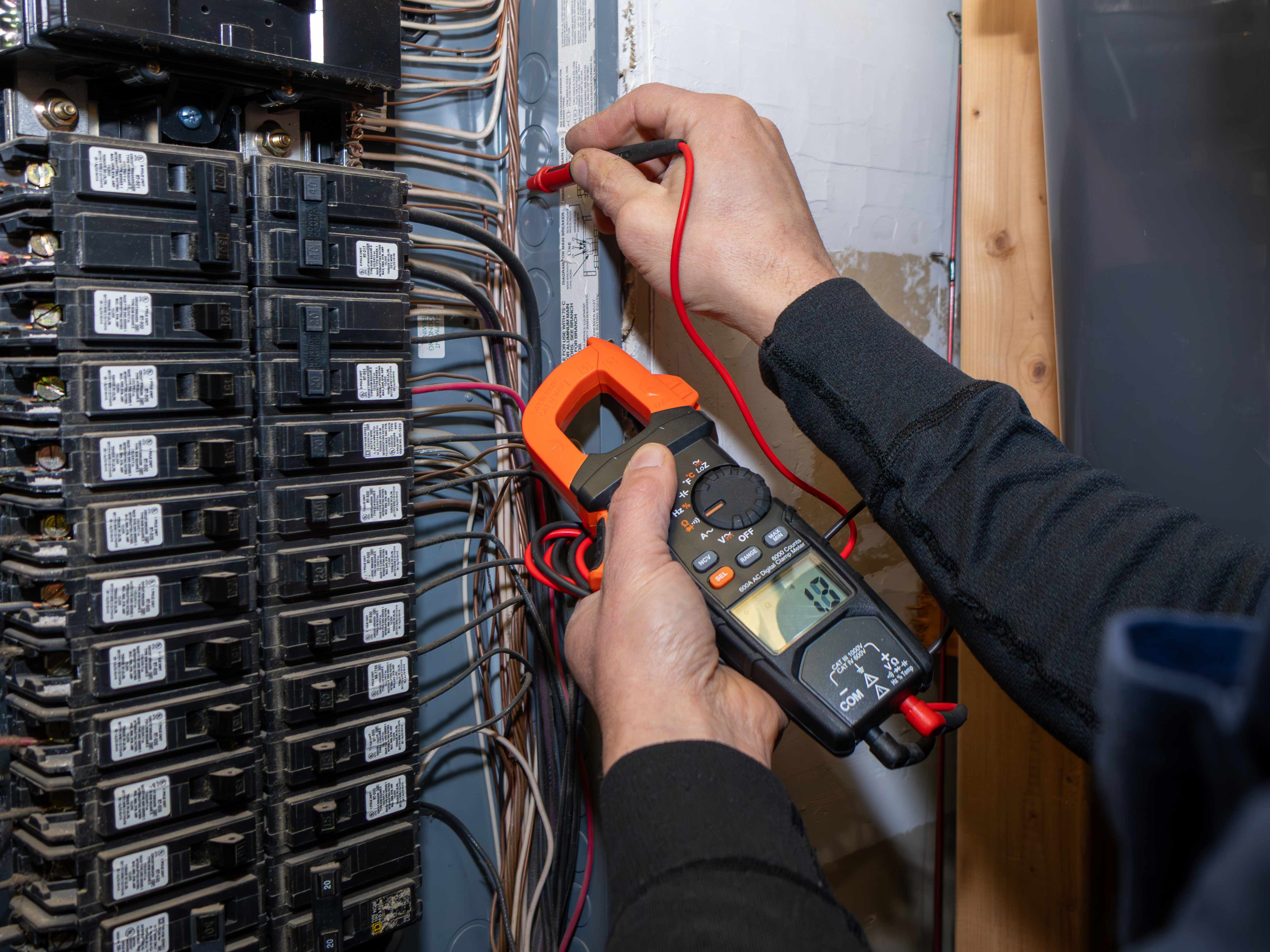
How much does it cost to add an electrical outlet in Los Angeles? Discover typical prices, permit needs, and factors that affect installation costs in L.A.
Keep an eye out for bad outlets


One bad outlet can affect others, so it’s important to test surrounding outlets for power.
Common causes of bad outlets are loose wiring, old circuit breakers, and series wires.
Outlets typically last 15 to 25 years.
The cost to replace a bad outlet ranges between $125 to $200.
If you notice an outlet isn’t working properly, your next thought may be to wonder whether one bad outlet can affect others in your home. Electrical outlets are one aspect of a home many of us take for granted, but when an outlet isn’t working and then it affects others, it can be frustrating to determine the cause and severity of the problem.
Find out the cause behind a bad outlet, how to fix the issue, and how you can keep your home safer with working electrical outlets.


Yes, one bad outlet can affect others in your home, but it doesn’t always impact other outlets. If one outlet stops working, your next step should be to test the power of other outlets. Here are common reasons why multiple outlets will go out simultaneously.
If multiple outlets in your home aren’t working, check to see if they are ground fault circuit interrupter (GFCI) outlets. GFCI outlets are required by national building codes to be in kitchens, bathrooms, laundry rooms, basements, and other rooms where water is near the outlet. These outlets work like a circuit breaker and will shut off power if an electrical shortage or surge is detected. This action can cause multiple outlets to shut off at the same time.
If your GFCI outlet isn’t working, try pressing the reset button. If the reset button doesn’t work, the outlet may be old and you’ll need to replace it.
Many older homes have several outlets connected on a single circuit breaker, meaning one bad outlet can trip the circuit breaker and cause other outlets to stop working. Try resetting the breaker to get the other outlets working. If that doesn’t work, your home may need new wiring, which will require the help of a professional electrician.
One or multiple outlets may stop working if your home’s wiring is loose. This problem typically occurs in older homes where the wiring has loosened over the years or in new homes where wiring was installed incorrectly. Loose wiring causes more repercussions than bad outlets, such as electrical shock or fire, so call an electrician for help if you notice loose wiring in your walls.
Daisy chained outlets, also known as series wires, are when outlets are connected in a series. If one outlet in a daisy chain breaks down, other outlets connected in that series will stop working, too. An electrician can help you identify which outlet has broken down and repair it to fix the problem in the other outlets.
If an outlet has no power, remember several potential reasons and solutions exist.
Ensure your circuit breaker has not been tripped, and if so, reset it if necessary.
Check if you are dealing with a GFCI outlet and press the reset button.
Confirm whether the plug is in the outlet or loose and address it.
Test the other outlets nearby to see if the issue is localized.
Plug in a different appliance or device to determine if the first device was the issue.
Consult a local licensed electrician if you need help determining the issue or are uncomfortable working with electricity.
According to data from Angi customers, 36.4% of electrical switch, outlet, and fixture jobs are emergencies, which require immediate service and repair. This includes active sparking, smoke coming out of the outlet, and a persistent burning smell. On the flip side, 63.6% of jobs are non-emergency work. If you need emergency electrical service, you’ll pay more in labor—sometimes double the standard hourly rate in your area.
It's good to know that in 2024, replacing an electrical outlet costs generally between $125 and $200, influenced by your home's location, labor fees for the area, which can range from $50 to $100 per hour, and outlet type.
For example, a standard 120V outlet replacement averages $175. However, a GFCI (ground-fault circuit interrupter) outlet can cost up to $500. Standard outdoor outlets are also pricier, with installation costs ranging from $150 to $260.
If you notice a bad outlet and other outlets no longer working, you can take a few simple steps to try and fix the issue on your own. These steps include simple fixes like resetting your circuit breaker or resetting a GFCI outlet.
If those methods don’t work, the next step is to call an electrician near you. These electrical pros have the knowledge and skills to fix the issue and keep your electrical wiring safe and secure. You should not attempt to DIY fix serious electrical problems like replacing or updating your home’s wiring.
Jiovany and his team were so great from the start, at communicating then at the job, fast and dedicated. Didn’t leave until we were happy with every detail. They went far and beyond to make the place spotless and pristine. Reliable, responsible and respectful.
AJ was immensely responsive, professional, and easy to work with. Would wholly recommend to anyone in need of electrical work!
One has to be careful with the brokers on the internet now. Last year I was scammed in the binary trade option by a broker I met on instagram. I invested $89200 which I lost, I couldn’t make a withdrawal and I slowly lost access to my trade account for 3 months. I was frustrated and...
I contacted the chimney guys last week for an inspection and cleaning service, everything is done and thank goodness they came because they removed a lot of dirt and they told me that the person who came for maintenance last year had done nothing! So now you have my trust.
We contracted with Maintenance Floor Services for many years to clean a 6 story medical office building. I have nothing but positive things to say. The team exhibits a high level of trustworthiness and professionalism. The building was treated with the upmost care. You can contact Javier...
everything was perfect, if anything happens I will definitely contact you again
Roman is a breath of fresh air. He comes into your home and get everything that you need done. I highly recommend him.
I hired Mr. Kim to restore our gym equipment pads and benches. The quality of work was great and was completed as promised. I gave the value a 4star only because I felt the price was too high but so is everything else. We plan on using Mr. Kim again in the near future... Thank you, Mr. Kim
I was really satisfied with the pleasant and quick service provided today. They quickly created a key replacement for my 2013 Toyota Camry. I was blown away! And I highly urge you to choose this locksmith for your key-making requirements.
Ramon Cordova was prompt, professional, and very knowledgeable about the various things we needed done. He arrived promptly to assess the work we needed, then arranged a return appointment. To our benefit he was able to arrive a day earlier than originally planned. We had recently bought this...
From average costs to expert advice, get all the answers you need to get your job done.

How much does it cost to add an electrical outlet in Los Angeles? Discover typical prices, permit needs, and factors that affect installation costs in L.A.

Los Angeles homeowners can upgrade or fix their home electrical system with a large-scale rewiring project. Here’s how much it can cost and how long it’ll last.

Upgrading your electrical panel boosts safety, supports modern appliances, and may increase home value. Learn electrical box replacement costs in Los Angeles.

When you need to choose between a 100-amp versus 200-amp electrical panel, check out our easy-to-understand explanation of your home’s power options.

There are a few signs to look out for if you think you might be experiencing an issue with your electric system. Here are some common warning signs for electrical problems, plus what issues you can tackle yourself and when you should call a pro.

If your home contains original aluminum wiring, you may want to take action to avoid danger. Learn why aluminum wires are hazardous and how you can address these issues safely.